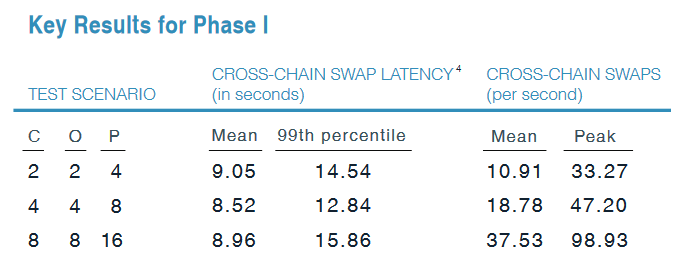
The Federal Reserve Bank of New York settled cross-border FX spot trades in under 10 seconds using distributed ledger technology (DLT) under tests as part of its “Project Cedar” it revealed today.
Critically, the trades were conducted across a "multi-ledger ecosystem" it added.
The New York Fed conducted the simulated trades using a wholesale central bank digital currency (CBDC) prototype as part the inaugural project of its New York Innovation Center (NYIC); a partnership with the BIS.
It chose spot trades as they are “relatively simple transaction, as FX rates are agreed upon at the start of the transaction. This allows for a narrow scope demonstrating the value of the technology” it said.
Project Cedar used a “bespoke system leveraging ideas from existing digital currency technologies” written in Rust, using a permissioned multi-ledger blockchain network, an Unspent Transaction Output (UTXO) data model, and a Proof-of-Authority consensus protocol. The New York Fed hastened to add that the tests were meant to “contribute to a broad and transparent public dialogue about CBDC from a technical perspective.
“It is not intended to advance any specific policy outcome, nor is it intended to signal that the Federal Reserve will make any imminent decisions about the appropriateness of issuing a retail or wholesale CBDC, nor how one would necessarily be designed” the central bank said in a press release filed Friday November 4, 2022.
The NYIC was founded in November 2021 to focus on innovations around five “opportunity areas”: Supervisory and Regulatory Technology, Financial Market Infrastructures, Future of Money, Open Finance, and Climate Risk.
“Safe and efficient cross-border payments are critical to the functioning of the global economy,” said Per von Zelowitz, Director of the New York Innovation Center. “Project Cedar Phase I revealed promising applications of blockchain technology in modernizing critical payments infrastructure, and our inaugural experiment provides a strategic launch pad for further research and development regarding the future of money and payments.”
The experiment comes a day after Standard Chartered announced that it would be settling EURO trades via blockchain after becoming the latest bank to adopt the Partior platform, alongside DBS and J.P. Morgan.
See: Standard Chartered to support EUR settlement via DLT

The New York Fed said today: “Foreign exchange spot trades are among the most common wholesale cross-border transactions. These transactions can be conducted bilaterally or multilaterally between counterparties such as central banks and private sector financial institutions. The FX market is the largest wholesale market in the world, with daily turnover of over $7 trillion. Given the size and breadth of this global market, the potential impacts of technological innovation on its operations and processes are substantial.”
“In addition to meeting the goals of instant and atomic settlement, Phase I successfully established a basis for future NYIC research into potential advancements of the systems that move money and other financial assets between banks and financial institutions. The data produced in this phase represent a benchmark for future testing. Importantly, the Phase I prototype also demonstrated a successful guide for how wCBDC may be exchanged in a multi-ledger ecosystem. Future research focused on interoperability across a heterogeneous mix of DLT stacks will evolve these findings” the central bank added in a short report published today.
